Commonwealth Covenant Church: A forgotten NZ sect
Bronwyn Rideout - 12th May 2025
The story of the Commonwealth Covenant Church (CCC) has been hanging out in the chasms of my Google Drive for some time. A while ago I was asked about cults or sects that might be in the Wairarapa besides the 2x2s. This group came up in my search, although much of what I found about their activities was not based in the Wairarapa but rather in the Hutt Valley. The CCC is not the easiest group to research, as their numbers had thinned considerably by the early 2000s, and numbered just six by 2013. They were a long-dead congregation by the time anything would be recorded on the web. Archival records are limited (or restricted), and when the CCC does warrant a mention in a book or academic work, it’s limited to one or two lines.
However, we wouldn’t be here if I didn’t find something to share. Before I dive into ancient and less ancient headlines, let me set the scene - as sparse as it is.
It all begins with a Yorkshire pastor named Smith Wigglesworth, a born-again Christian who only learned to read after he married his wife, a Salvation Army preacher named Mary “Polly” Featherstone. He claimed that the Bible was the only book he ever read, and it was one of the few, if not the only, reading materials he allowed into his home. He began his preaching career in 1907, after he was baptised during a revival. He became well-known for his faith healing, and similarly practised laying on of hands and other forms of anointing during his many visits to New Zealand in the 1920s.
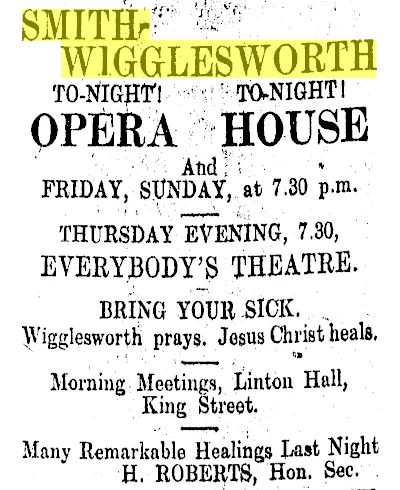
Wigglesworth’s visit to NZ in 1922 had an impact. Allegedly he was “unknown to New Zealand”, despite nearly 20 years of preaching. Nevertheless, his meetings were said to be quite popular. One story of unknown origins claims that he had a special meeting with eleven church leaders during a visit to Wellington, and as they prayed…
_“Wigglesworth rose to seek the Lord, and the presence of God began to fill the room. Soon the glory of God became terrible. The light became too bright, the heat too intense. The other men couldn’t take it any longer. Everyone of them left the room! Only Wigglesworth could continue in the midst of the Shekinah.
Another minister heard what had happened and determined at the next gathering, no matter how strong the presence of God became, he would stay until the end. Once again the scene repeated itself: Wigglesworth began to pray, the holy presence of God filled the room, and the glory became unbearable. Everyone left, except this one leader. He would not be overcome and driven out by the manifest presence of the Lord. But it was too much. Wigglesworth was caught up in the Spirit, radiant with holy fire, and even the determined minister couldn’t stand the intensity. Soon enough he was gone too!”_
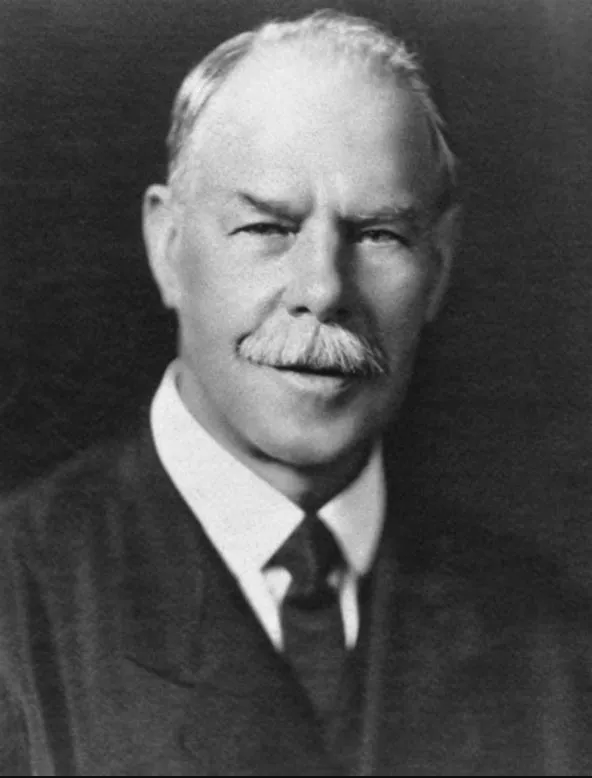
Smith Wigglesworth
The Wigglesworth campaign led to the growth of the Pentecostal Church in New Zealand, which included multiple congregations that are still operating in NZ today: Elim, Assemblies of God (which Wigglesworth himself would preach for), and the Apostolic church.
Commonwealth Covenant Church was another such congregation, although now defunct. I can find little at present regarding its leaders, Francis Robert Wilson and his brother Eric David. According to Pastor Paul Saunders, on the YouTube channel Pioneer Ministry, Francis was Wigglesworth’s chauffeur during the Wellington stop on the 1922 campaign.
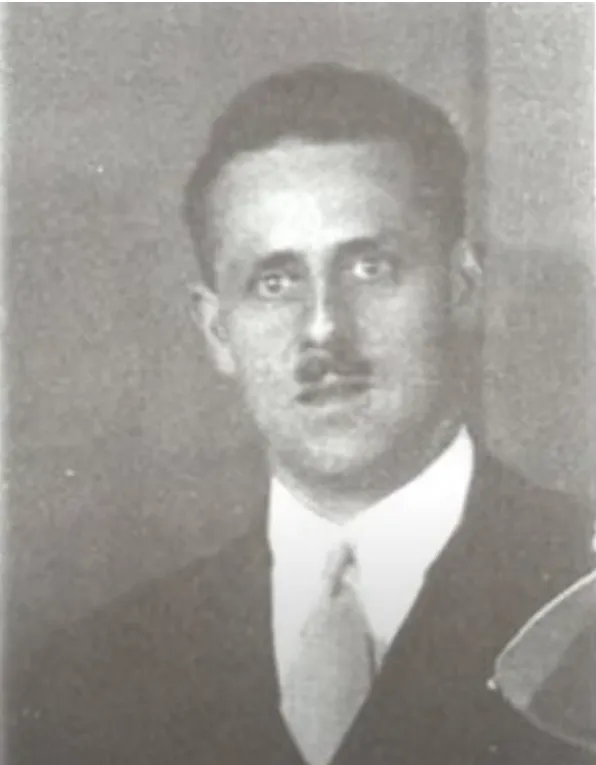
Francis “Brother Frank” Wilson
While the Pentecostal revival was gaining momentum in New Zealand, belief in British/Anglo Israelism was also gaining a foothold here. British Israelism is a pseudohistorical belief that Britons are the direct descendants of the ten lost tribes of Israel. It is also associated with beliefs in pseudo-archaeology, bible prophecies, that the British royal family is descended from King David, and that most Israelites are not Jewish. One New Zealander, Alexander James (A. J.) Ferris, would be one of the most prolific pamphleteers on the subject before and during the war.

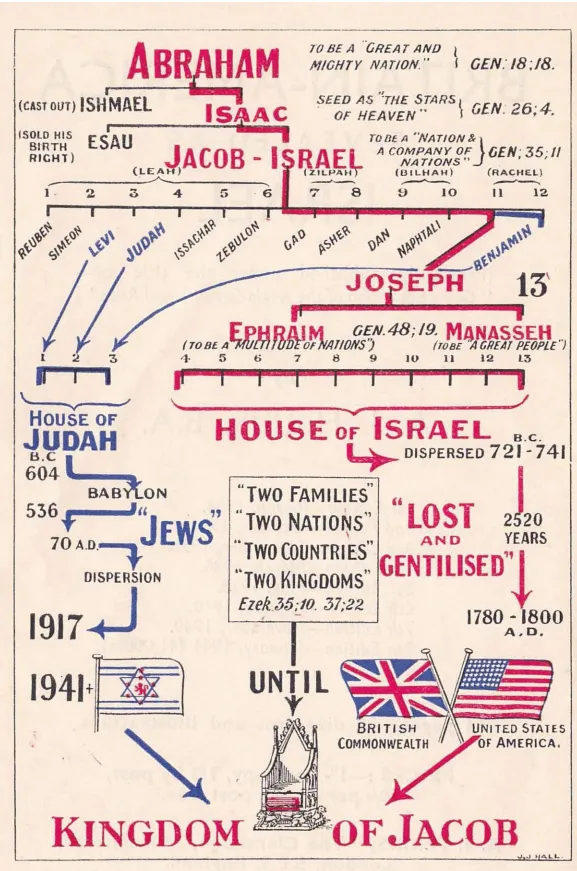
Before Ferris relocated to London, he was part of the British Israel Church in Lower Hutt; there were a couple of wedding announcements in which he acted as the officiant. In PapersPast, Frank Wilson and his brother are also named as pastors with the British Israel Church in Nelson. The church would retain the name of British Israel from 1932 until January 1939. All British Israel Churches in NZ changed their name to Commonwealth Covenant Church, to avoid conflicting with the name of the British Israel World Federation.
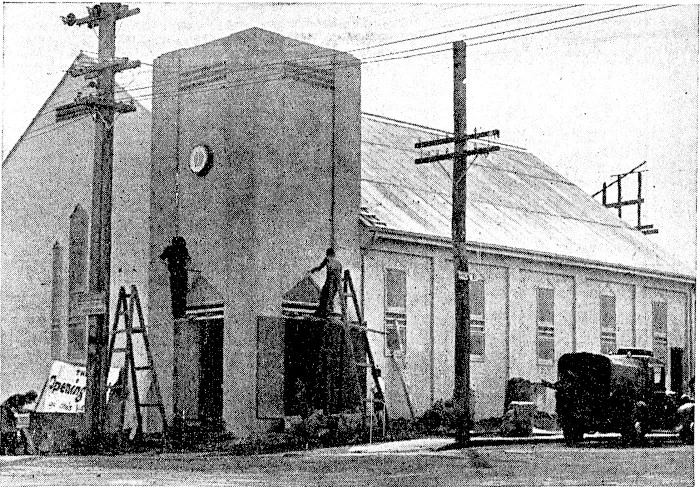
Headquarters of the British Israel Church being erected in Otahuhu, in September 1938. Adverts for the Otahuhu church would include “(formerly British Israel Church)” as late as 1944, according to PapersPast records.
According to Massey University’s 1985 directory, Beliefs and Practices in New Zealand, the CCC believed in the gift of speaking in tongues, abstaining from addiction and gambling, the authority of the bible, and that humans inherit their sinful nature by natural birth. The return of Jesus Christ was imminent for CCC members, and they were expected to practice self-denial in daily life. Church meetings were held on Sunday, as well as Tuesday and Thursday evenings. While they took advantage of statutory holidays, they did not esteem one day as being more special than any other; holidays like Christmas were a time for acts of charity.
For the first couple of years, it appears that the CCC didn’t court much controversy, taking up minimal ink in the newspapers with their calls to service and wedding announcements. In 1940, a member of the CCC appealed for an exemption from military service, due to being a man of religion. This was a headscratcher for the Wellington Man-power committee, because there was no clear definition of what constituted a religion in this context; at the time, the secretary of the committee made a determination based on whether the appellant could perform marriages - and he was listed as someone entitled to do so. There was some friction with the British Israel World Federation about reference being made to the CCC’s former name, but otherwise nothing further was said about this particular matter until six months later, in June of 1941.
The Evening Post published a summary of appeals made to the Armed Forces Appeal Board on conscientious grounds against military service. Lindsay Gordon Pollock, a carpenter who joined the CCC after having visions, appealed as a conscientious objector. His hearing was initially adjourned for further evidence, but later dismissed. John Blaiklock, another CCC member, had his appeal dismissed in December 1941. In 1942, T. A. Gabrielson appealed on the grounds that he conscientiously opposed parading on Sunday, but would do so any other day or night of the week. When asked if he would take up arms to defend his family, Gabrielson stated that he would defend his family with prayer; when further asked if he was prepared to fight on a Sunday, he agreed that he could defend any other part of the community on Sunday. However, he and his family would not defend themselves or request assistance. The decision in his case was reserved.
Things get dark in 1943. It is possible that through the following cases of child harm and neglect, we get a deeper insight into the beliefs of the CCC than is presented by the Massey University directory. Thomas Tregaskis and Eric David Wilson were charged in connection with the assault of a seven-year-old girl. The Tregaskis family were living in the home of Harold Quinney, a farmer in Tapawera. Wilson was visiting the family at the time, and while conducting a morning devotional service Wilson ordered Tresgaskis to whip or thrash his daughter with a stick, 30-40 times. A couple of months before Wilson’s visit, the girl had stolen a ring from her parents, and had initially denied doing so. Wilson claimed that had observed the girl’s disobedient and prideful nature over several years, and knew that she was a naughty child due to the “light” he had seen from her. He thoroughly believed that thrashing a child out of love, rather than temper, could work wonders in beating the devils out of them. Literally. Eric stated in a court of law that he had seen devils fleeing from his children’s bodies when he thrashed them. Tregaskis told detectives that his daughter had been disobedient, and Wilson had informed the family that the Bible stated his daughter should be punished. Had it not been for Wilson’s advice, Thomas would not have disciplined his daughter in any way. The injuries sustained by the child, and the shame of Tregaskis, were such that she was kept away from school for several days, and was not examined by any independent person.
The case was a unique one, due to the duelling principles of parental rights, children’s rights, and religious rights. The magistrate quickly determined that the thrashing was both excessive and unwarranted, and that Wilson’s zeal in administering such punishments was, “…in inverse ratio to his theological training and education”. Still, the magistrate did believe that parents may lawfully administer moderate corporal punishment, and the child’s sex, age, and physical condition had to be taken into account:
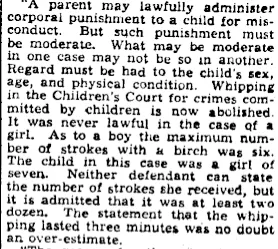
Still, the magistrate pulled out what would be considered an epic mic drop of 1943:
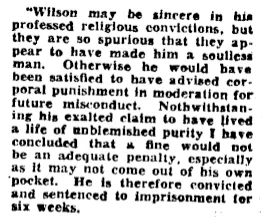
Tregaskis received two years probation for his role in the assault, under two conditions; that he refrain from administering corporal punishment to his daughter during the probationary period, and that Child Welfare Officers could access the child at reasonable times.
A similar case occurred in 1946. The same magistrate in the Tregaskis case imposed a fine of just 10 pounds on Gerald James Austin for thrashing his five-year-old son. Austin also belonged to the CCC, but unlike Tregaskis he acted under his own volition. His son’s crime was telling fibs, and the charge against Austin was made when the school medical officer observed bruising about 8 inches long.
In 1947, a 23-month-old died in Lower Hutt from laryngeal diphtheria. The child had been ill for a fortnight, which was initially attributed to croup and teething. Reports claim that Frank Wilson came and prayed over the child while the infant’s grandfather failed to convince his son to call for a doctor. Medical evidence given during the inquest stated that any skilled physician would have diagnosed diphtheria, and the chances of recovery would have been good.
Finally, there is a disturbing conjugal rights case that occurred in 1948. Laurence Bailey appeared in the Supreme Court in September of that year to petition for the restitution of conjugal rights by his wife Phyllis. The couple had attended the CCC in Lower Hutt for 13 years, and Phyllis tried hard to live up to Frank’s sermons. She accused her husband of physical and sexual assaults, having abnormal desires, and having threatened to kill her. The children were also subject to physical abuse, with one of her elder children leaving home because of it; the younger children were still with Laurence, and she was willing to go back if he returned to the CCC and did not seek marital relations. Laurence denied the allegations, and accused Frank Wilson of a couple of things. Mainly, that Frank Wilson badgered Bailey to sell his house, car, and other personal belongings (estimated to be valued at 7000 pounds), with the proceeds going to the CCC church in the Hutt. Wilson had also demanded that Laurence quit his carpentry job and work for the ministry instead, at a rate of 3 pounds/day. Either Bailey or the newspaper editor implied further unseemliness with the juxtaposition of these sentences:
“He thought it was his wife’s duty to return to him on the earlier basis, which included marital relations. He denied having ever forced such relations upon her. Sometimes when his wife was not feeling well, she retired to a back room of the church with “Brother Frank” to be prayed for by him.” (Source)
The court found in Laurence’s favour, and the judge ordered Phyllis to return within three months; a timeframe which was thought to enable Phyllis to carefully consider her prospect of comfort and security with her husband, or the unpredictability that came with relying on the congregation. The reason for ruling against Phyllis was that he saw Laurence to be sincere, and Phyllis was likely influenced by listening to others who make open confessions about aberrant sexual behaviour.
Regardless of who was telling the truth, Phyllis was simply put into a shit position by the judge.
Laurence’s testimony revealed a very interesting picture of CCC at the time. He was threatened with cancer by the church for continuing with his petition. When he was still attending services, he was required to be at the church between 9 and 11 times a week. 250-700 people attended meetings, with some acting as full-time, 24-hour prayer warriors. Laurence also spoke about the disorienting atmosphere of the Saturday night meetings, with 300-400 sweaty people in the same room singing the same hymn 20-30 times. At one such meeting, he had meant to just give a 10-shilling donation, but accidentally gave 50 pounds; Laurence surmised that similar confusion occurred with other congregants, which enabled Wilson to collect 28,000 pounds. Mr. Bailey also accused the CCC of breaking up several families in the Hutt region. Frank, like his brother, went beyond the scriptures with the guidance given to his flock. One sermon given by Frank and sent to followers was advice on the separation of husbands and wives.
Within a couple of days of the judgment, members of the public held demonstrations outside the Lower Hutt CCC. It was retaliation for derogatory comments Frank Wilson was alleged to have made against men in uniform; It had come up in the Bailey case that Wilson had pointed to Bailey and said that:
“Brother Bailey has a uniform. Any creeping, crawling, yellow cur could get into a uniform and hold a rifle but it takes guts to go into a conscientious objector’s camp” (Source)
At one point, over 100 men had gathered at the church and threatened the pastor. Five or seven men entered the church while the congregation was present, and threatened to give the Pastor a piece of their minds. However, one of the interlopers kept getting hit in the head with a purse while a woman shouted hallelujah. Church members told a different story, where 40 men charged down the aisle of the church at the sound of a whistle, interrupting a baptism and attempting to drag Wilson out of the church. Wilson received further threats following the ruckus, and eventually had to defend himself publicly. It was reported that every man who had been physically fit had served in World War II, while in World War I Frank had worn the King’s uniform. While the R. S. A. may have been underwhelmed with Wilson’s explanation, the public was more incensed. On September 12th, 300 people gathered at the church. They threw stones on the church roof and interrupted Wilson’s sermons, which at the time were about Britain’s likely defeat at the hands of Russia.
There was also a schism happening within the church, with nine members being branded heretics the week before the judgment in the Bailey case. But no further details on that issue were reported in the news.
In 1950, another CCC member tried to avoid military service. An appeal was filed by an 18-year-old who wished to join the CCC ministry and participate in missionary work in the Pacific. Ministry training was intense, and it appears from the newspaper article that the CCC either had their own training or were associated with a ministry training programme. Unfortunately for the young man, his father opposed the appeal and it was ultimately dismissed.
The last piece of “news” about the CCC that can be found in PapersPast is in 1953, when a church was built in 3 weeks - entirely on the efforts of seven volunteers from the Lower Hutt CCC. From ancestry.com, it appears that Frank died in 1949, and is buried in Palmerston North.
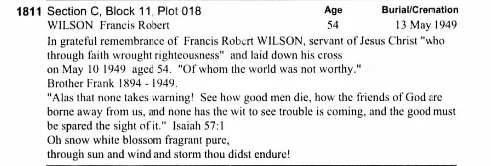
Until 2016, it appears the CCC did not court any additional controversy, although its fate sometimes intertwined with other churches. It appears that in 1960 they purchased the Woburn estate, and used it as a maternity home, quarters for single men, and other church activities until they sold it in 1978.
Hazel Houston, wife of Hillsong founder Frank Houston, recalled how Frank secured the CCC building for their denomination sometime in the 1960s or early 70s. They needed a new building that could fit their growing Assemblies of God congregation. One of their members had a vision where they were worshipping at the CCC. At the time it was a bit of a stretch, since several members of Houston’s church, including two board members, had been excommunicated from the CCC, making the couple doubtful that the CCC would sell to them. But as luck would have it for Houston, Hutt City council had actually bought it with the intention of demolishing it to widen the road. When the council changed its plans, they attempted to sell it to the Salvation Army. And when the Sallies turned it down, it was offered to Houston.
During a prayer meeting, Houston took the two board members who were ex-CCC to revisit their old church. They and later several other ex-CCC members were approving of the idea of a return to their old home. Despite having only $28,000 of the $55,000 they had offered for the property, the council allowed them to furnish the building. When Houston finally had to come clean, the council had to keep quiet as there would likely be an outcry if the church got evicted, and another outcry from the public when they found out how the deal went down.
In 2016, at least three former members of the CCC spoke to Stuff about their childhoods in the sect. Sophia and her cousin Anna (pseudonyms) called the CCC as much of a cult as Gloriavale. At the time, Peter Lineham was asked about the CCC. He cautioned against calling the church a cult, but understood where Sophia and others were coming from, arguing that small churches were the perfect place for intense in-group dynamics. However, the stories of the child survivors went beyond mere loyalty to a single leader.
Sophia had raised sexual assault allegations against Jonathan Belcher in the 1990s, but her and her mother were forced to leave the church. Belcher himself has since been released from prison, and as of 2016 was still accusing Sophia of lying. As experienced by the members of Houston’s church, the CCC practised excommunication. One former child member from Nelson would have left with her mother and siblings had her grandmother not demanded that at least one grandchild remain; She left the church in the late 1950s, at the age of 15.
The women describe incredibly isolated childhoods, with Sophia recalling strict rules around fraternisation between boys and girls, prohibitions against makeup/radio/television, and expectations around the place of women in the home. As Laurence Bailey experienced back in the 1940s, Sophia also remembers CCC followers being told that going to the police was immoral. Multiple child members recall the fear and awe that congregants expressed when in the presence of CCC leader Stanley Watkins and his wife. The authority of the church was extensive, as church leadership frequently separated children from their families. For several months, or even a year at a time, children from CCC families would be sent to live with other church families far from their actual relatives.
After Watkins’ death in the 1990s and several families leaving the already dwindling congregation, the CCC underwent several reforms. In the Hutt, the CCC became known as the Hope Centre, and is currently led by Pastor Paul Saunders. While Hope Centre is still an eye to revival, there is no evidence that the worst of the doctrines expounded by the Wilsons or Watkins (especially British Israelism) have survived. There has been no follow-up with the adults who came forward about the CCC almost a decade ago. I think we would all hope that they were able to get the justice or reconciliation they sought back then.